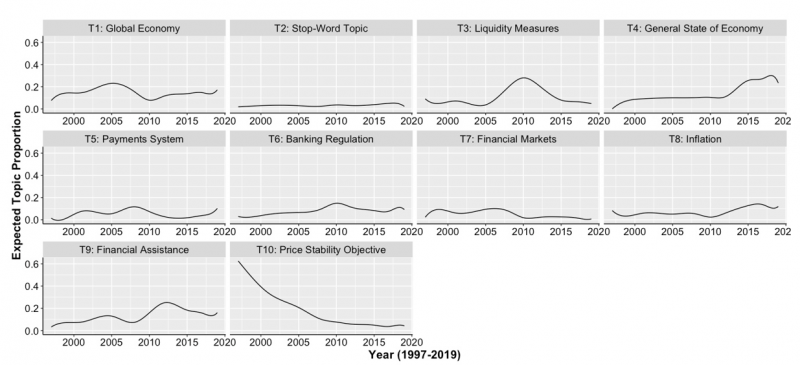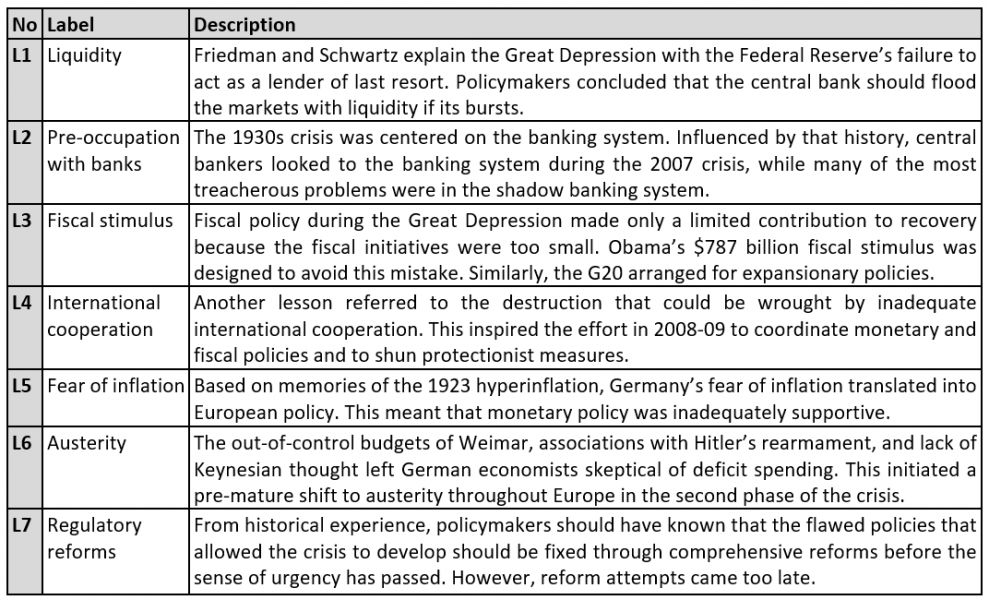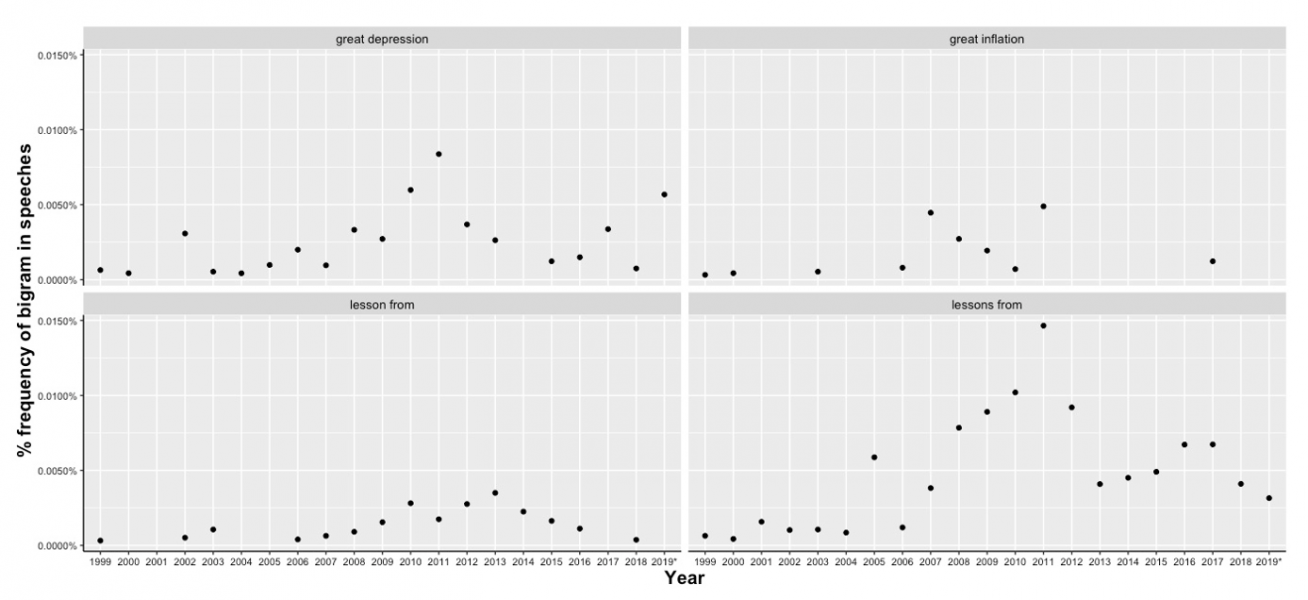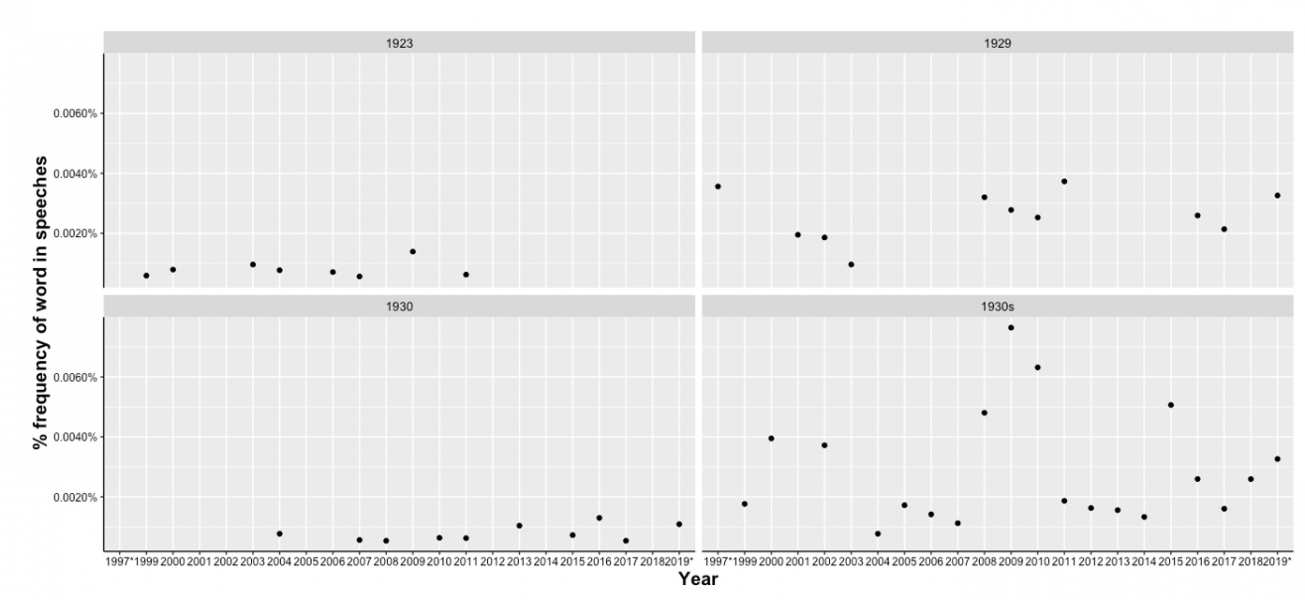References
Blei, D. 2012. “Probabilistic Topic Models.” Communications of the ACM 55 (4): 77–84.
Eichengreen, B. 2015. Hall of Mirrors: The Great Depression, the Great Recession, and the Uses – and Misuses – of History. New York: Oxford University Press.
Haldane, A. and M. McMahon. 2018. “Central Bank Communications and the General Public.” AEA Papers and Proceedings 108 (May): 578–83.
Küsters, A. 2022. “Applying Lessons from the Past? Exploring Historical Analogies in ECB Speeches through Text Mining, 1997-2019.” International Journal of Central Banking 18 (1): 27 –329.
Shiller, R. 2017. “Narrative Economics.” The American Economic Review 107 (4): 967–1004.








